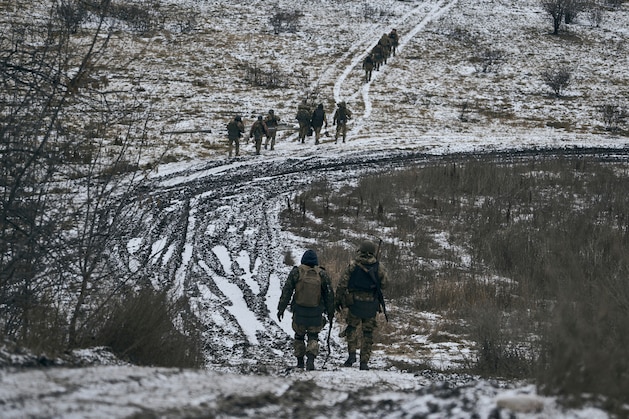For months, Ukrainian and Russian troops have been fighting over the Bakhmut region. While London and Washington doubt the usefulness, the ISW still thinks it makes sense to defend the region.
The war of attrition in Bakhmut has no end: Ukrainian and Russian troops have been fighting for the region for months. London and Washington have doubts about the usefulness of Ukraine’s Bakhmut defense: the costs and casualties are too high for a strategically unimportant goal.
The US think tank “Institute for the Study of War” (ISW) comes to a different conclusion, they consider the defense to be sensible. The ISW explains that there is a good chance that Russia’s offensive will be weakened in the long term. Reason for assumption: The war of attrition is reminiscent of past battles.
Russian troops have been trying to conquer Bakhmut for months. But Ukraine is doggedly defending the small town. However, Kyiv Independent sources as well as international observers agree that the battle for the town of Soledar, which was part of the battle for Bakhmut, is now over. In a local offensive in January, Russian forces managed to break through the Ukrainian defenses and take what was left of the industrial city. Soledar represents one of the first notable successes for the Russians since last summer. Nevertheless, the fight for Bakhmut continues for the Ukrainians.
However, according to a senior US official, Ukraine should not fixate on defending Bakhmut, but rather use the time and resources to prepare a counteroffensive. The Russians are numerically superior and the Russians also have an advantage in terms of artillery resources. For example, the US government advises that Ukraine should not sacrifice its soldiers and ammunition for a strategically unimportant goal.
The ISW sees things differently in its most recent management report: Despite the high costs, the defense is “probably a strategically sensible measure”. The US think tank reports that even if Bakhmut is not of strategic importance, Ukraine would have paid a high price if Russia had easily taken Bakhmut.
Accordingly, the ISW reports that a quick capture might have led to the Russian troops quickly pushing Ukraine far back. This would have put the Ukrainian armed forces in a bad position: they would have been forced to set up hasty defense positions in less favorable terrain,” the ISW said.
But the ISW believes in the success of the defense primarily because of the similarity to previous battles. In the past, Ukrainian armed forces have successfully employed a similar model of gradual attrition. For months in spring 2022, Russian troops tried to breach Ukrainian defenses in Severodonetsk and Lysychansk.
The steadfastness of the Ukrainians paid off here: the Russians captured Lysychansk only after a controlled Ukrainian withdrawal from the area. But the capture of Lysychansk and the administrative border of the Luhansk region quickly proved operationally insignificant for the Russians.
The long defense of the area finally forced Russia to end the offensive in Luhansk – which ultimately led to the stagnation of the Russian offensive in Donbass in the summer and autumn of 2022, according to the ISW.
A similar result could now also come in Bakhmut: By defending Bakhmut, the Ukrainians could effectively concentrate Russia’s troops in the region and thus prevent further offensives in other areas. The ISW reports that the Russian armed forces have been moving personnel and equipment to the area since May 2022 and have not made any significant progress so far.
According to the ISW, the fact that Ukraine is not able to derive greater benefit from the Russian armed forces’ commitment to Bakhmut is also due to the West’s delayed or withheld arms deliveries. Weapon systems and supplies are essential for a large-scale counteroffensive by the Ukrainians.
Another major problem for Ukraine is the lack of communication and coordination between too many troops from too many different units in far too small an area, the Kyiv Independent reports.
Anyone who knows which devices at home consume how much electricity can make targeted savings. Our e-paper shows which devices consume how much electricity for all common household appliances, from ovens and hobs to refrigerators and washing machines to TVs and WLAN routers. There are also a number of instant power-saving tips.















